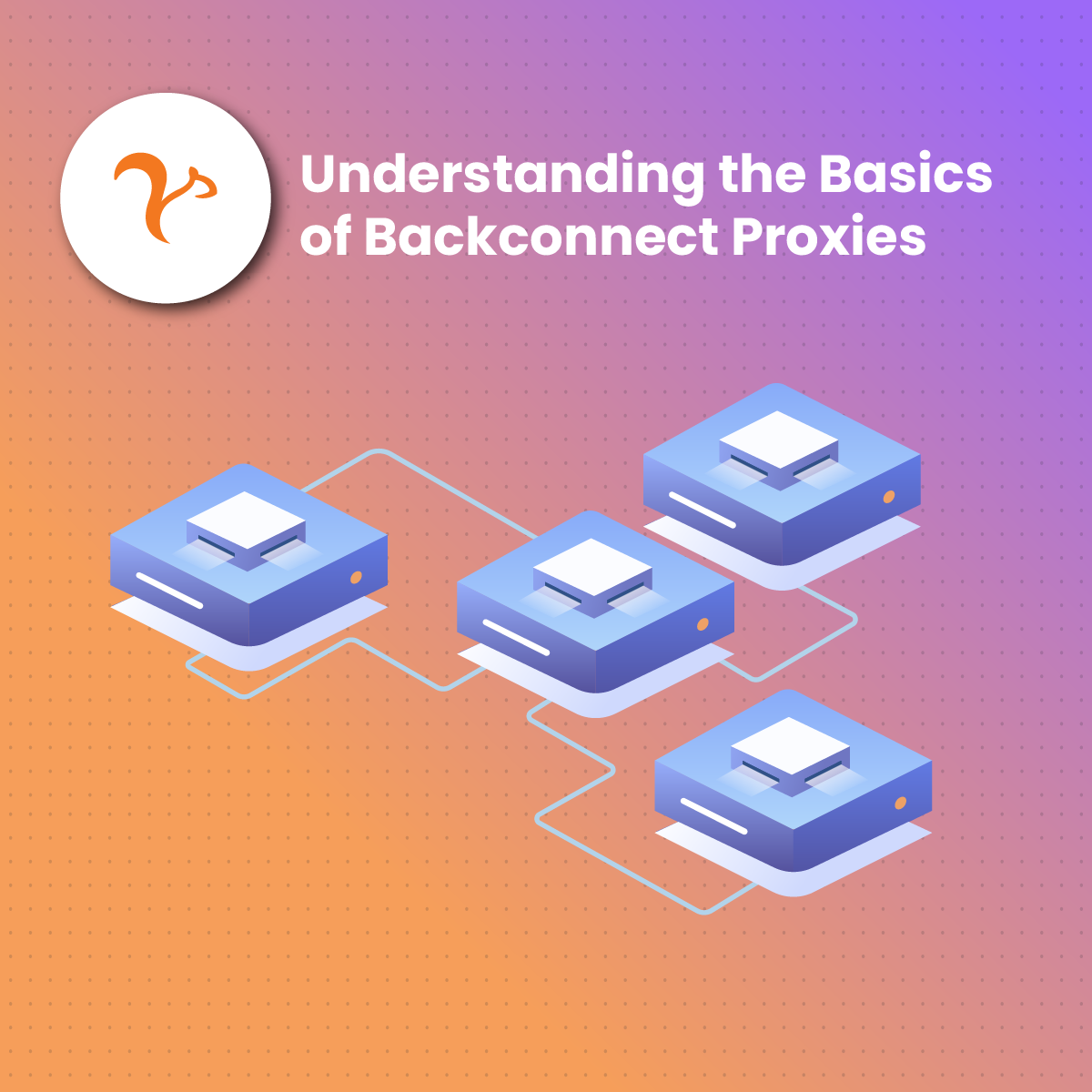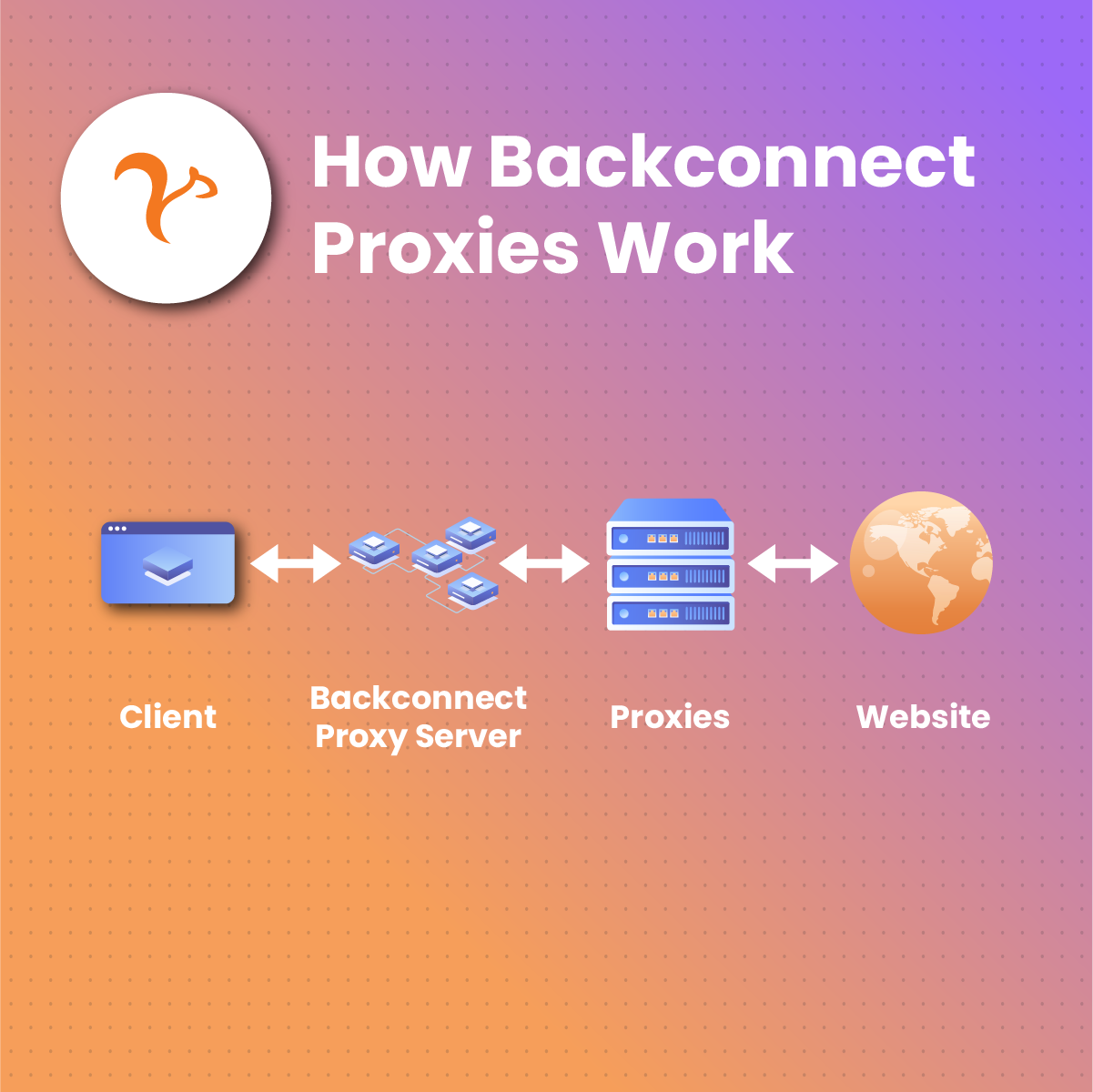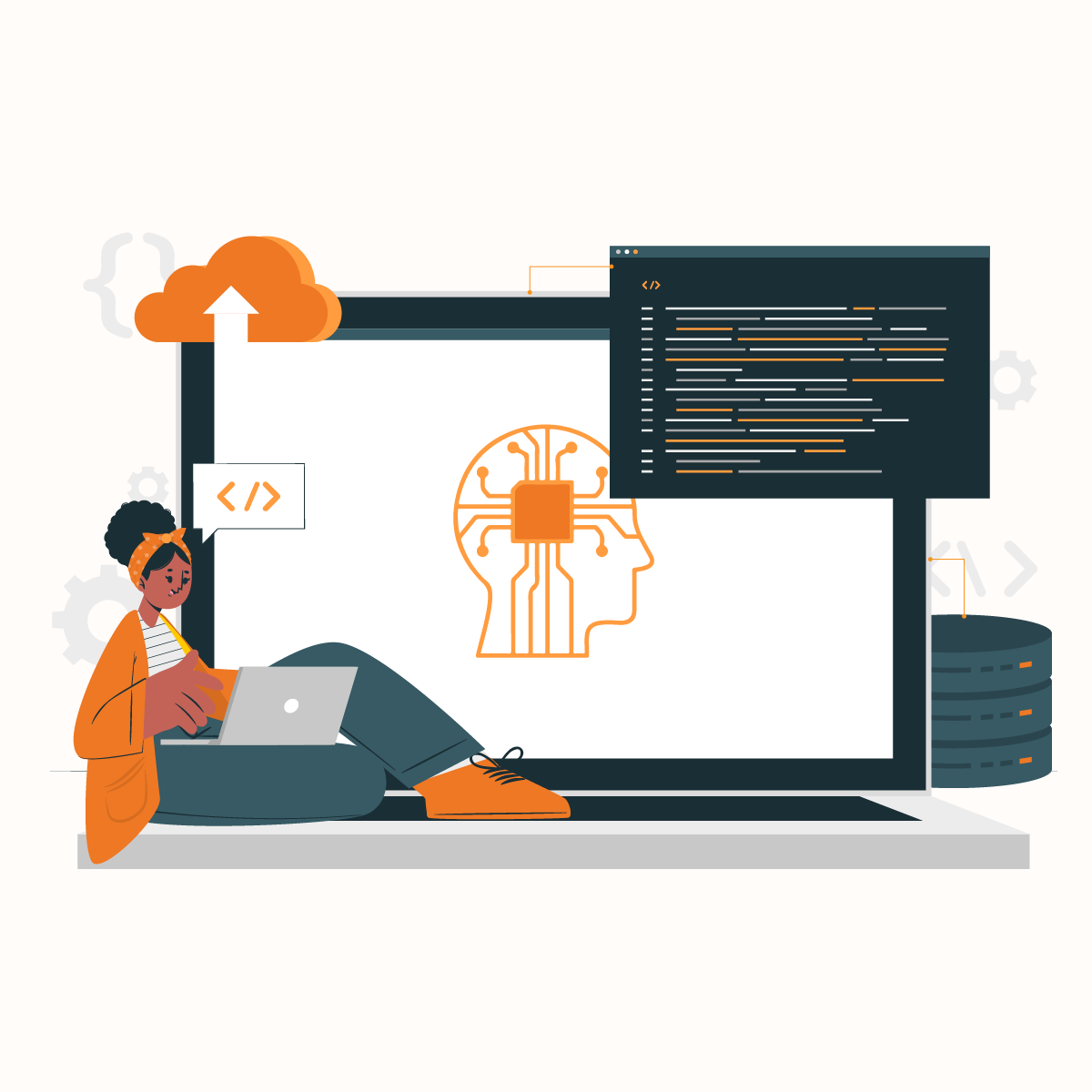Backconnect Proxy: A Comprehensive Guide for all Proxy Clients
You may have already heard about how IP addresses have gained prominence in helping people uncover other people’s geographical locations. Does that sit well as a good thing? Oh well, while it sounds like it could be helpful, considering certain instances, it is not exactly what many on the online space would want, at least not at all times. The truth is that IP addresses are a rival to internet privacy. Thanks to the intervention of internet proxies like the backconnect proxy which operates to restore a high level of anonymity on the internet, among its many other functions.
Guess what, the backconnect proxy does it way better! It was developed, like a collection of different proxies, to not only restore privacy to the online space but to also assist individuals and firms who struggle with certain internet restrictions.
Let’s not get ahead of ourselves right here. This guide has been put together to educate you on all that you need to know about backconnect proxies, including what you should expect when you choose to use a backconnect proxy service.
What is a Backconnect Proxy?
A backconnect proxy is a type of proxy server setup that dynamically routes internet traffic through a pool of rotating IP addresses. A backconnect proxy is a category of internet proxy that permits users to automatically rotate IP addresses following various requests. This action helps to ensure that tools set up to wade off proxies will find it too difficult to ascertain the user’s main IP address.
The usual proxy server permits you to operate with their IP addresses as well as geo-locations rather than your own. Of course, this provides a guarantee that you can surf the web, gain access to certain geo-blocked content and explore a lot of other possibilities. Nonetheless, there are many other functions that it cannot perform.
Unlike traditional proxies, which use a single IP address for a session, backconnect proxies switch between multiple IP addresses during a session. This rotation can occur at specified intervals or after each request, providing a higher level of anonymity and reducing the risk of IP bans and throttling.
The primary function of a backconnect proxy is to enhance privacy and security for users by making their internet activities harder to trace. This setup is particularly useful for tasks that require extensive web scraping, data mining, or accessing geo-restricted content. By continuously changing IP addresses, backconnect proxies make it difficult for websites to detect and block the user’s IP, thus ensuring uninterrupted access and data collection.
The regular variant of proxies can not easily execute tasks such as web scraping but the backconnect can do that, and a lot more. backconnect proxy employs a switching technique that allows users to conceal their original IP addresses which is replaced by a new one that can allow them gain entry to specific web spaces.
The switching process can be set up to function upon requests or at specific times. Also, the server permits users to switch these IPs manually. This rotation pattern does not activate any firm of alarm, hence, IPs are not restricted before or after a task is concluded.
Backconnect proxy can, therefore, be tagged as dynamic in its function due to its ability to switch IPs upon request unlike the regular variant of proxy whose function is static. But then, how does this proxy variant work? Let us explore.
How Do Backconnect Proxies Work?
For the backconnect proxy to work efficiently, it requires a stream of proxies alongside a setup timing for switching proxies.
Backconnect function in the same outlined pattern as other regular proxies. It operates by conveying web traffic through a connection of servers, each of which has an assigned to a distinct IP address. This creates a tough task for anybody who attempts to monitor your internet activities and determine your geolocation.
A major benefit of utilizing this proxy option is that it can assist its users in penetrating geo-blocked regions to access specific content that is not made accessible to a global audience.
People who live in regions with restricted access to some kind of online streaming services can utilize this proxy option to obtain an IP address that is enabled in that country. By that means, they can penetrate through this blocking and stream the content that they so dearly want.
Backconnect proxy is also a great option for guaranteed online anonymity and also helpful to execute later-scale information compilation.
These theories might make the process appear difficult, nonetheless, let us quickly work ourselves through the direct steps on how the backconnect proxy works.
- A customer transmits a request to the backconnect server, sourcing permission to gain entry into an online site or web resource.
- The backconnect proxy server allocates an IP to the customer’s transmitted request, simultaneously masking the customer’s initial IP so as not to get detected.
- Afterwards, the backconnect proxy server proceeds to relay the request to the aimed site displaying only the newly allocated IP address generated for the specific request
- The online site or resource reacts to the request transmitted by the proxy server.
- The backconnect proxy server detects the reaction from the site and relays it to the customer while rotating the IP address for improved anonymity.
- This process is repeated again and again at any time that a request is being made to any target site. However, the different requests are being transmitted through the different proxies available in the backconnect stream of proxies. The action is bound to continue as long as there are many more proxies for new requests to be transmitted through.
What are Some Use Cases of Backconnect Proxy?
Backconnect proxies are essential for tasks that involve high-volume, automated requests while maintaining anonymity. They are widely used in web scraping, allowing users to collect vast amounts of data without getting blocked by target websites. These proxies also play a key role in ad verification, ensuring that ads display correctly across different regions. For SEO monitoring, backconnect proxies help track rankings and competitor strategies. They’re also used in market research to analyze pricing trends globally, and in fraud prevention to mask real IPs, ensuring secure and anonymous transactions.
Now that we have acquainted ourselves with what a backconnect proxy is and how it works, it is time to explore some of its use cases. There are tons of uses of backconnect proxy. Let’s check out a few.
- Large-scale internet information scraping. backconnect proxy is the most suitable proxy for tasks like scraping a massive amount of data from diverse areas of the internet with zero worries of being noticed. Utilizing multiple IP addresses for diverse request input, its servers can make it almost impossible to detect or restrict the scraping activity.
- Online site testing and advert display confirmation. Many online site creators and designers usually opt for a tryout on their sites to get a glimpse of their customer’s experience. backconnect proxy assist to facilitate this tryout. Similarly, website promoters and managers utilize proxies to confirm how their adverts are being shown on different online pages across the internet.
- Increase in search engine optimization. backconnect proxies can assist firms and other businesses to attain a more improved search engine ranking in the internet space. Since it enables users to utilize multiple IP addresses, these businesses can initiate multiple appearance activities to reflect different customers visiting the site. Such activities, in turn, assist to improve the website’s credibility.
- Access to buying limited and exclusive-edition items. Generally, proxies let you get access to online spaces that you would not ordinarily get access to due to location restrictions. With them, you can purchase items that are posted in regions that are far beyond your network’s reach. But guess what? The backconnect proxy elevates your chances. How is that? With it, you can effortlessly rotate IP addresses to view exclusive content or items posted in geo-restricted regions and it will also enable you to make multiple purchases utilizing different IPs. The best part of it all is that these online sites will almost never detect that you are the one behind the multiple purchases.
- Online market survey. With the help of backconnect proxies, online businesses can make the move to gather and survey data from multiple sources, not minding if some of the sources are geo-restricted. This is mostly beneficial to clients, suppliers, and rivals of a specific business venture.
What are the Benefits of Backconnect Proxy?
Backconnect proxies offer numerous advantages, starting with enhanced anonymity, as they rotate IP addresses frequently, making it difficult for websites to detect or block users. This constant rotation improves the success rate for high-volume activities like data scraping. Additionally, they allow users to bypass geographic restrictions, accessing content from different regions seamlessly. Backconnect proxies distribute traffic across multiple IPs, reducing the chance of downtime and ensuring continuous operation. Their scalability makes them ideal for businesses needing to gather large-scale data efficiently without being flagged.
Most Common Benefits of Using Backconnect Proxies:
- Backconnect proxies facilitate anonymity in the online space. Its ability to hide your original IP just like the usual proxy with an added twist makes it stand out from the rest. How is that? It hides your original IP address with more than just one backup IP to be substituted. Online sites cannot single you out as your online identity blends in like other regular customers.
- It improves online security. The proxy servers are developed to protect your online presence through its pool of IP addresses. With the backconnect proxy, you can be rest assured of an excellent surfing experience as its proxy servers act as a shield from malicious content.
- backconnect proxy eliminates the challenges that come with request restrictions or limits. Many online sites usually set up request limits to restrict requests from IP addresses. Once one of such online sites detects that an IP address has exceeded its set limit, it proceeds to block that address. However, the backconnect proxy’s persistent switching of IP addresses in its network helps to eliminate these limit challenges. The IP address switch allows you to input a significant number of requests by the minute with zero fear of a website ban.
- This kind of proxy allows you access to a significant number of IP addresses. With the backconnect proxy, all of the IP addresses accessible to your proxy source become accessible to you as well. This means you can continue to explore content and the likes in the online space with diverse IP addresses without the fear that your original IP can be made public to most of these websites.
What are the Downsides of Backconnect Proxy?
- There is the possibility of lagging connections. backconnect proxy, as earlier established, is more like a proxy pool. What this means is that its server is made up of diverse proxy servers, each of which has their varying grade. While some connections may appear to run at full speed, others may slack and even trigger alerts from certain websites. In some cases, when requests are being made, the back-and-forth deliveries may experience delays due to the geo-location gap between the interacting servers. To fix such an issue, you may want to opt for a backconnect proxy server that is not too far away from your original location or the server of the restricted sites.
- Backconnect proxy might work on a higher budget. Of course, to get more value is to pay more, at least in most cases. That happens to be the harsh reality of life. Regular proxy servers are significantly more budget-friendly when compared to backconnect proxies. The proxy server not only consists of a variety of proxies but they also function collectively to achieve better online anonymity results. With such a feature, providers are more likely to request an added fee when they attempt to get them.
Factors to Consider When Choosing a Backconnect Proxy
Your option when picking a backconnect proxy for use should mainly be dependent on the likes of:
- The intended task it is required for
- The proxy source
While the usual proxy can perform quite many operations, there are needs that the backconnect proxy would be the most suitable for. Let us check out some of the factors you should consider before you make that backconnect proxy choice.
- First, it is necessary that you ensure that the backconnect proxy option is dependable and can seamlessly offer a steady connection. This is the only way to be assured that you can surf the internet and share data without any connection interruption.
- Also, the speed at which the proxy operates is something you do not want to ignore. A lagging connection is a major setback to all of which you aim to achieve when using the backconnect proxy.
- Opt for a proxy that guarantees you access to a significant number of IP addresses as this can help you through the IP rotation process. The main distinguishing factor between regular proxies and the backconnect proxy is that it gives you better access to create multiple online appearances through different undetectable IP addresses. If you are choosing a proxy to use, it is highly recommended that you confirm that you get the best among all offers available to you.
- Lastly, endeavor to compare the cost attached to the different proxy options and the efficiency of the customer support provided by the proxy source. Proxy providers do not all have a fixed cost attached to setting up a back-connect proxy for their customers. Once you seem to have ticked out all of the above factors, this last factor is most likely to help with your final choice.
Final Thoughts on Backconnect Proxies
The internet is, indeed, advancing every day with multiple innovations to solve all of the challenges that we encounter online. While many online users have celebrated the introduction of the use of IP addresses due to its help in narrowing certain location searches, others have whined about its pitfalls. At last, the powerful tool, the backconnect proxy, which brings together different proxies to maximize their use in ensuring increased online anonymity and security.
Of course, your regular proxy might seem good enough for us right now, but bear in mind that the backconnect proxy is most certainly the most advanced option, especially when you need to carry out voluminous projects like data scraping. Ensure to get ahead in the game when the inevitable need arises to choose a backconnect proxy to enjoy all of its packed benefits.
Frequently Asked Questions About Backconnect Proxy Services
Is there a distinguishing factor between rotating proxies and backconnect proxies?
The answer is No. backconnect proxies are simply streams of proxies that employ the rotation of IP addresses to ensure that users can input multiple requests to access contents without being detected or identified. Therefore, both proxies are the same.
Can I change my backconnect proxies and how do I do that if possible?
Switching a backconnect proxy is most largely dependent on the proxy source. Nonetheless, there are a few steps that can help. First, you have to input your details on the proxy source site to sign in. Then get a hold of the proxy setting section and sign in to change your proxy. Thereafter, you can change your proxies in line with how the proxy service permits you to. Specific proxy sources allow a one-time switch for all your proxies while others might only allow you to switch a proxy at a time. The next step would be to kickstart these newly switched proxies, by either modifying the settings or just a mere switch touch. You may also need to conduct a test run to ensure that the switched proxies are useful. A proper checker can be helpful for that.
Is it necessary to utilize a backconnect proxy IP address?
Your choice to opt for a backconnect proxy IP depends on the specific activity you would be needing it for. The usual proxy can assist in quite many activities that you need to perform. Nonetheless, a backconnect proxy is the most helpful in cases where you need to utilize many IP addresses or when you have to switch IPs regularly.
What does the term “sticky proxy” mean?
As the name implies, sticky proxies are simply proxies whose servers utilize an IP address for a specific timeframe. Once the set timeframe elapses, a new IP is introduced as a replacement for the previously utilized IP address. The server then moves on to pick up the newly introduced IP for use.







